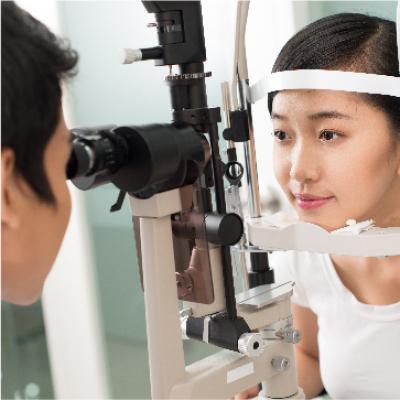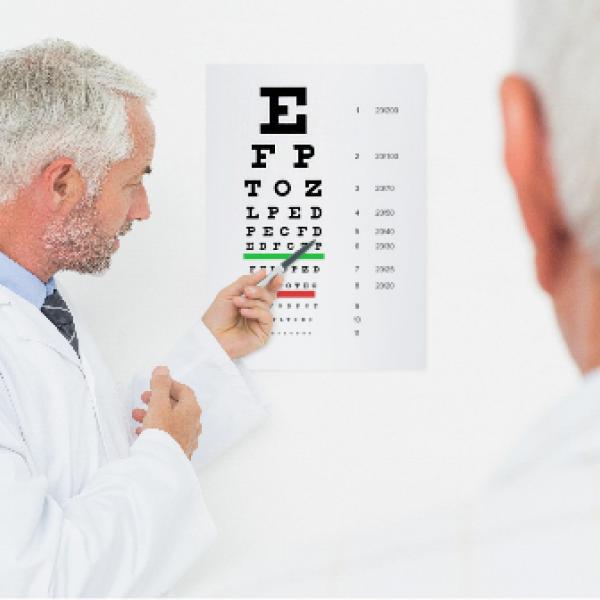What is glaucoma?
Glaucoma is a group of eye diseases that can cause vision loss and blindness by damaging a nerve in the back of your eye called the optic nerve.
The symptoms can start so slowly that you may not notice them. The only way to find out if you have glaucoma is to get a comprehensive dilated eye exam.
There’s no cure for glaucoma, but early treatment can often stop the damage and protect your vision.
What are the types of glaucoma?
There are many different types of glaucoma, but the most common type in the United States is called open-angle glaucoma — that’s what most people mean when they talk about glaucoma. Other types are less common, like angle-closure glaucoma and congenital glaucoma.
What are the symptoms of glaucoma?
At first, glaucoma doesn’t usually have any symptoms. That’s why half of people with glaucoma don’t even know they have it.
Over time, you may slowly lose vision, usually starting with your side (peripheral) vision — especially the part of your vision that’s closest to your nose. Because it happens so slowly, many people can’t tell that their vision is changing at first.
But as the disease gets worse, you may start to notice that you can’t see things off to the side anymore. Without treatment, glaucoma can eventually cause blindness.
Am I at risk for glaucoma?
Anyone can get glaucoma, but some people are at higher risk. You’re at higher risk if you:
- Are over age 60, especially if you’re Hispanic/Latino
- Are African American and over age 40
- Have a family history of glaucoma
Talk with your doctor about your risk for glaucoma, and ask how often you need to get checked. If you’re at higher risk, you need to get a comprehensive dilated eye exam every 1 to 2 years.

When to get help right away
Angle-closure glaucoma can cause these sudden symptoms:
- Intense eye pain
- Upset stomach (nausea)
- Red eye
- Blurry vision
If you have any of these symptoms, go to your doctor or an emergency room now.
What causes glaucoma?
Scientists aren’t sure what causes the most common types of glaucoma, but many people with glaucoma have high eye pressure — and treatments that lower eye pressure help to slow the disease.
There’s no way to prevent glaucoma. That’s why eye exams are so important — so you and your doctor can find it before it affects your vision.
How will my eye doctor check for glaucoma?
Eye doctors can check for glaucoma as part of a comprehensive dilated eye exam. The exam is simple and painless — your doctor will give you some eye drops to dilate (widen) your pupil and then check your eyes for glaucoma and other eye problems. The exam includes a visual field test to check your side vision.

Did you know?
-
Glaucoma can happen in 1 eye or both eyes
-
Some people with high eye pressure don’t get glaucoma — and there’s a type of glaucoma that happens in people with normal eye pressure
-
Normal eye pressure varies by person — what’s normal for 1 person could be high for another
What’s the treatment for glaucoma?
Doctors use different types of treatment for glaucoma, including medicines (usually eye drops), laser treatment, and surgery.
If you have glaucoma, it’s important to start treatment right away. Treatment won’t undo any damage to your vision, but it can stop it from getting worse.
-

Medicines. Prescription eye drops are the most common treatment. They lower the pressure in your eye and prevent damage to your optic nerve.
-

Laser treatment. To lower your eye pressure, doctors can use lasers to help the fluid drain out of your eye. It’s a simple procedure that your doctor can do in the office.
-

Surgery. If medicines and laser treatment don’t work, your doctor might suggest surgery. There are several different types of surgery that can help the fluid drain out of your eye.
Talk over your options with your doctor. While glaucoma is a serious disease, treatment works well. Remember these tips:
- If your doctor prescribes medicine, be sure to take it every day
- Tell your doctor if your treatment causes side effects
- See your doctor for regular check-ups
- If you’re having trouble with everyday activities because of your vision loss, ask your doctor about vision rehabilitation services or devices that could help
- Encourage family members to get checked for glaucoma, since it can run in families

Featured Resource: Talk With Your Doctor About Glaucoma
Do you have glaucoma? This guide makes it easy to talk with your doctor about your condition. It includes:
- Information about glaucoma
- Questions for the doctor
- A symptom tracker
What is the latest research on glaucoma?
Scientists are studying what causes glaucoma and how we can find it earlier and treat it better. NEI also funds research on new treatment options.

